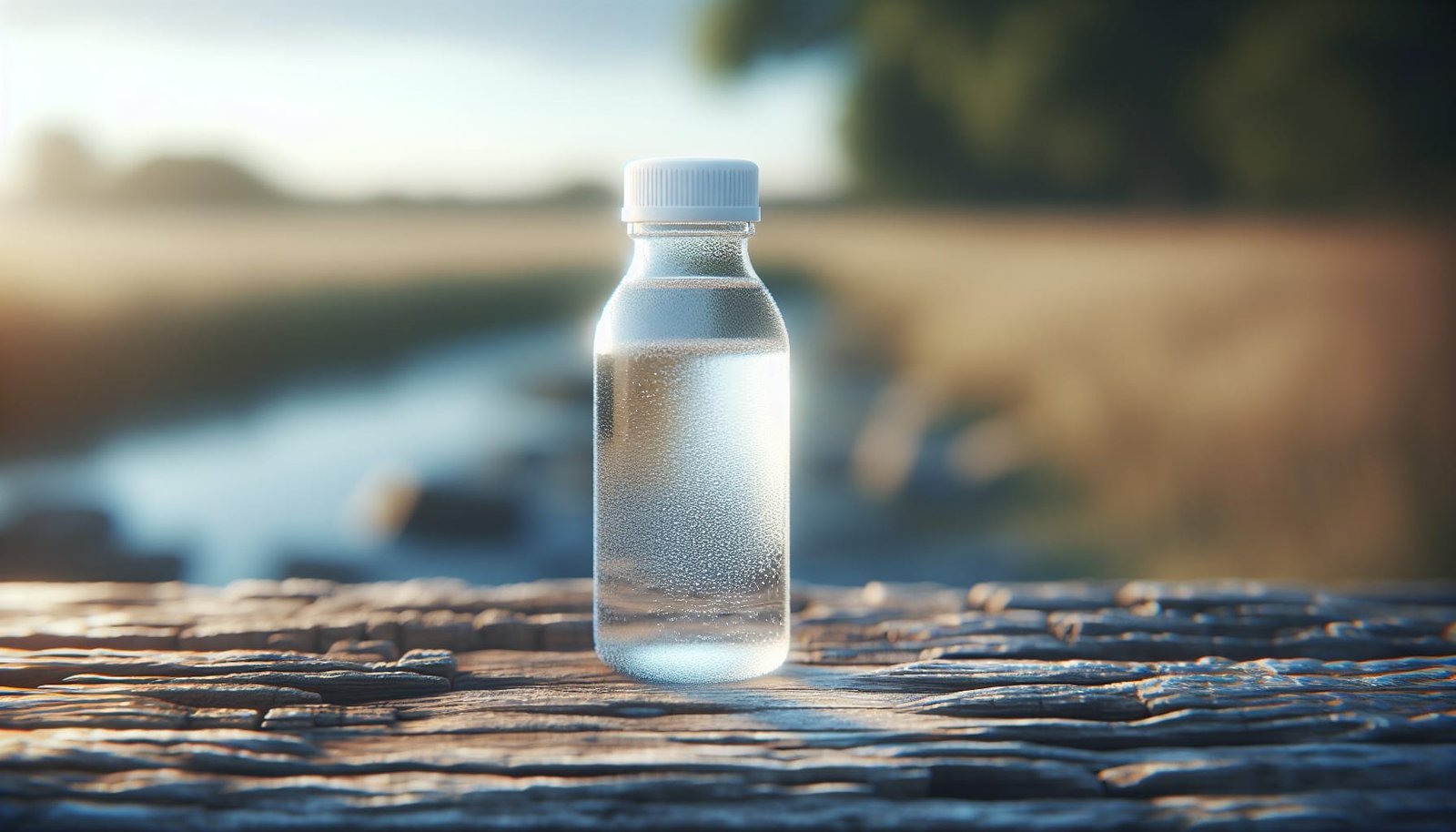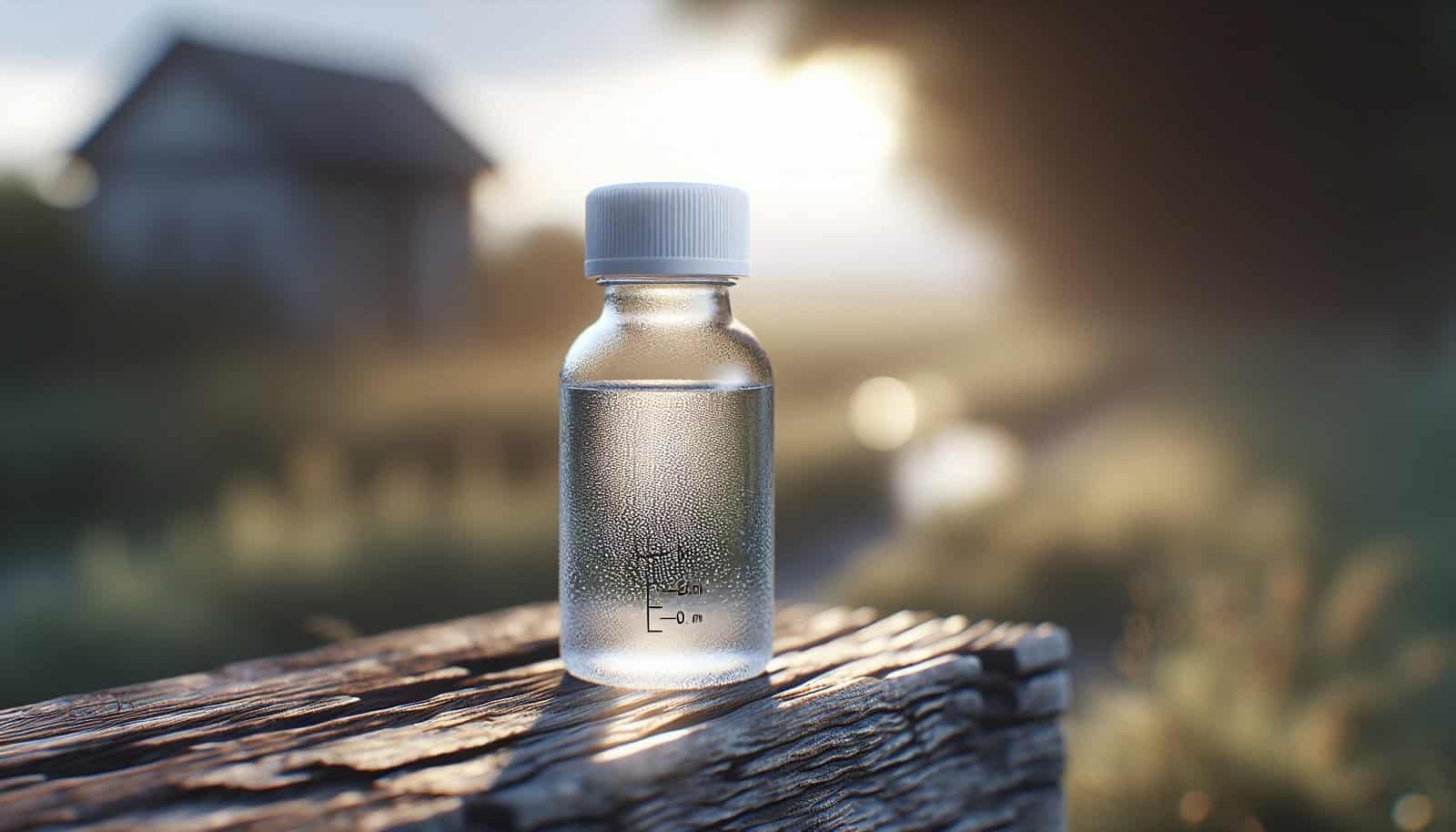?How often should you test your well water to keep your family safe and your system running smoothly?

Why testing your well water matters
You rely on your private well for drinking, cooking, bathing, and watering gardens, but unlike public systems, private wells aren’t regulated. Regular testing is the only reliable way to know whether your water is safe and whether treatment or repairs are needed. Contaminants can cause immediate illness (like bacterial infections) or long-term health risks (like exposure to arsenic or nitrates). Testing also tells you how your well is performing and whether maintenance is required.
Basic recommended testing frequency — quick overview
You should test for certain contaminants more frequently than others. Bacteria and nitrates are typically tested more often, while other contaminants are checked annually or every few years depending on your location, well construction, and household needs. If you experience changes in taste, smell, appearance, health symptoms, or after events such as flooding or nearby pesticide application, you should test immediately.
Table: Suggested testing frequency by contaminant
This table gives you a practical schedule you can follow. Adjust it based on your local geology, land use, and household health needs.
| Contaminant / Parameter | Suggested Frequency | Why it matters |
|---|---|---|
| Total coliform and E. coli (bacteria) | Every 1–3 months for high-risk; at least annually for most wells | Bacterial contamination can cause acute illness; frequent monitoring catches new contamination quickly |
| Nitrate / Nitrite | Annually; every 3–6 months if pregnant or infant present | Nitrates can cause methemoglobinemia in infants and are common near agricultural areas |
| Total dissolved solids (TDS) / Conductivity | Annually | TDS gives a general sense of water quality change over time |
| pH | Annually | pH affects corrosion of plumbing and performance of some treatments |
| Iron & manganese | Annually or when staining/taste issues occur | Common aesthetic contaminants that can clog systems |
| Hardness (calcium/magnesium) | Every 1–3 years | Impacts scale buildup, soap usage, and water heater efficiency |
| Arsenic | Every 2–3 years in known-risk areas; at least once if never tested | Arsenic is a chronic toxin and is common in some regions |
| Lead | Every 1–3 years if plumbing contains lead or if corrosion suspected | Lead causes neurological damage, especially in children |
| Volatile organic compounds (VOCs) / petroleum hydrocarbons | Every 1–5 years near industrial or fueling sites | VOCs can be harmful at low concentrations and may require specific treatment |
| Pesticides / Herbicides | Annually or after nearby applications | Agricultural runoff can contaminate wells |
| Radon (in water) | At least once, more often in high-radon areas | Radon in water can add to indoor air radon levels |
| Sulfate | Every 1–3 years or if taste/odor issues occur | High sulfate can cause taste and laxative effects at high levels |
| Sodium | Annually if on restricted diet or near road salting/agriculture | Sodium levels may affect those on low-sodium diets |
| Cyanobacteria toxins (if surface water influence) | As needed during blooms | Toxins from algal blooms can be very dangerous |
Use this table as a baseline. If your well is shallow, near septic systems, farmland, livestock, or industrial sites, you’ll want more frequent and broader testing.
When you should test outside of the regular schedule
You’ll need to test immediately in certain situations. These event-driven tests are as important as scheduled checks.
- After heavy rain, flooding, or a major storm: Groundwater and wellheads can be contaminated by runoff or surface infiltration.
- After well construction, repairs, or pump replacement: New construction or disturbances can introduce contaminants.
- If you notice a change in taste, color, smell, or water pressure: Sudden changes often indicate contamination or system problems.
- When a household member becomes pregnant, a newborn is present, or someone is immunocompromised: These situations raise vulnerability to contaminants like nitrates and bacteria.
- If there is nearby pesticide, fertilizer, or chemical application: Runoff and leaching can quickly affect shallow wells.
- If water treatment fails or shows inconsistent performance: If filters, softeners, or disinfection systems aren’t working, test to confirm safety.
- When you buy or sell a property with a well: You should have an up-to-date water quality report.

Testing a new well: what to do and when
When a well is first drilled and put into service, test it right away for bacteria, nitrate, major ions, and any contaminants common to your area (such as arsenic or VOCs). Repeat testing at least every 3 months for the first year to establish a baseline and understand seasonal trends. New wells are especially vulnerable to surface contamination during development and completion.
How to sample your well water correctly
Correct sampling is essential. Improper sampling gives misleading results and might lead you to unnecessary work or fail to identify real hazards.
Basic sampling steps for bacteria and chemistry testing
- Use a certified laboratory: Contact your state-certified lab for instructions and sample bottles. Labs provide sterile containers for bacteriological testing and coolers for certain analyses.
- Flush the tap: Run cold water for several minutes to get fresh well water. For bacteria tests, avoid running the water too long; your lab will advise on the preferred flush time—often 2–5 minutes until temperature stabilizes.
- Use the right tap: Use an outdoor spigot or a tap that’s directly connected to the well without filters or softeners in between. Avoid taps with aerators or wands.
- Disinfect the tap if needed: For bacteria samples, briefly flame or disinfect the tap according to lab guidance, but do not use household bleach inside the sampling bottle.
- Fill bottles properly: For bacteriological samples, use the sterile bottle provided and don’t rinse it. For chemical analyses, fill to the indicated level and add preservatives if provided.
- Keep samples cool and deliver promptly: Bacterial samples generally must reach the lab within 24 hours and be kept cool. Follow the lab’s chain-of-custody instructions.
Common sampling mistakes to avoid
- Using tap water that passed through point-of-use filters or softeners.
- Letting samples sit at room temperature for long periods before delivery.
- Contaminating sterile bottles by touching the inside or cap interior.
- Rinsing sterile bacteriological bottles before filling.
If you plan to do some tests yourself, be aware that home test kits vary in accuracy. Use them for screening only, and confirm positive or concerning results with a certified lab.

Choosing a lab and understanding reports
Use a state-certified laboratory whenever possible. Your local health department can usually recommend labs and may even offer testing at low or no cost for bacteria and nitrates. When you get a lab report:
- Find the detection limits: These indicate the lowest concentration the lab can reliably measure.
- Compare results to health-based standards: Look for EPA Maximum Contaminant Levels (MCLs) for public systems (useful benchmarks) and state-specific standards. For private wells, there may not be enforceable MCLs, but EPA MCLs and state advisories are commonly used action levels.
- Check for non-detects and estimated values: “ND” means not detected at the lab’s reporting limit; “J” values might be estimated.
- Pay attention to units: mg/L is the same as parts per million (ppm); µg/L equals parts per billion (ppb).
- Ask the lab or local health department for help interpreting results: They can explain whether concentrations are of health concern and suggest steps.
Understanding contaminants and action steps
Different contaminants require different responses. Below are common contaminants, how often to test for them, typical health concerns, and treatment options.
Bacteria (Total coliform and E. coli)
- Frequency: Test at least annually; more often if you have infants, pregnant women, elderly, or immunocompromised people, and after events (flooding or repairs).
- Health risk: Bacterial contamination can cause gastrointestinal illness and other infections.
- Actions: If bacteria are detected, boil water for immediate use or use bottled water. Shock chlorination of the well and chlorination of the distribution system are standard corrective actions; after disinfection, re-test until negative. Investigate and fix wellhead or casing issues and nearby sources of contamination (septic systems, surface runoff).
Nitrate and nitrite
- Frequency: Annually; every 3–6 months if infants or pregnant women are present.
- Health risk: High nitrate levels can cause “blue baby syndrome” in infants and other health issues.
- Actions: If elevated, use alternative water sources for infants and pregnant women until treated. Treatment options include ion exchange, reverse osmosis, or blending with low-nitrate water. Identify and mitigate sources such as fertilizers, septic systems, or livestock.
Arsenic
- Frequency: Test at least once if you haven’t, then every 2–3 years in known or suspected areas.
- Health risk: Long-term exposure increases cancer risk and other chronic health effects.
- Actions: If above advisory levels, install treatment such as reverse osmosis, adsorption media (iron-based media), or consider well abandonment and drilling deeper or choosing a different source.
Lead
- Frequency: Every 1–3 years if your plumbing may contain lead or corrosive water is present.
- Health risk: Neurological damage, particularly to children.
- Actions: If detected, flush taps before use, replace lead-containing plumbing, adjust pH to reduce corrosion, and use certified point-of-use filters (NSF-certified for lead) until plumbing is replaced.
Volatile Organic Compounds (VOCs) and petroleum hydrocarbons
- Frequency: Annually or more often if you are near a gas station, industrial site, or spill area.
- Health risk: Many VOCs are toxic or carcinogenic.
- Actions: If VOCs are present, stop using the water for consumption until treated. Treatment usually involves air stripping, carbon adsorption, or reverse osmosis for certain compounds.
Radon (in water)
- Frequency: Test at least once, especially if airborne radon is high in your area.
- Health risk: Radon in water contributes to indoor air radon and slightly increases lung cancer risk.
- Actions: If high, consider aeration systems or granular activated carbon (with proper disposal).
Iron, manganese, sulfur (odor), hardness
- Frequency: Annually or when you notice issues.
- Health risk: Mostly aesthetic and operational (staining, taste, clogging) rather than health-threatening.
- Actions: Use water softeners, oxidation/filtration systems, or targeted catalytic media.

Treatment basics and what to expect
Selecting the right treatment depends on the contaminants, concentration, and water chemistry. Here are common treatment types:
- Chlorination / shock disinfection: Effective for bacteria and some viruses. You may need professional help for persistent contamination.
- Point-of-use (POU) filters: Reverse osmosis or activated carbon units at the kitchen tap can remove many contaminants including lead and some VOCs.
- Point-of-entry (POE) systems: Whole-house systems like water softeners, iron filters, carbon filters, and aeration systems treat water for the whole home.
- Ion exchange: Often used for nitrate and hardness removal.
- Reverse osmosis (RO): Effective for many inorganic contaminants including nitrate, arsenic (depending on form), and lead; usually used at the point of use.
- Granular activated carbon (GAC): Good for many organic contaminants and VOCs; check carbon change schedule.
- Aeration: Effective for radon and volatile compounds that can be stripped into air (and must be vented safely).
Always confirm that treatment systems are certified for your specific contaminant and concentration. You’ll also need ongoing maintenance, cartridge replacements, and re-testing to confirm performance.
Record keeping and maintenance
Good records help you spot trends and provide documentation if you sell your property.
- Keep copies of all lab results, service records, and well construction logs.
- Note dates of tests, treatments, repairs, and abnormal events (flooding, fertilizer application, septic work).
- Re-test after treatment installations and after repairs.
- Inspect the wellhead and cap annually for cracks, animal access, and evidence of surface water pooling.
- Maintain proper setbacks: Keep livestock, septic systems, and chemical storage away from the wellhead.

Costs and who does the testing
Testing costs vary by region and the number of parameters. Typical price ranges:
- Basic bacteria test: $20–$50.
- Standard chemistry panel (nitrate, hardness, pH, iron, manganese, TDS): $50–$150.
- Expanded panels (arsenic, lead, VOCs, pesticides, radon): $100–$500 depending on the number of analytes.
- Certified lab analyses are worth the cost for reliability. Local health departments sometimes offer low-cost bacterial and nitrate testing or can refer labs.
Home test kits are available for screening and can be useful for interim checks, but confirm worrying or high results with a state-certified lab.
Understanding regulatory guidance and local resources
Because wells are private, federal MCLs for public water systems don’t automatically apply, but they provide health-based benchmarks. Use EPA guidance and your state’s environmental or health departments for local recommendations. Your local county health department or state agency can tell you which contaminants are common in your area and how often to test.
Now, let’s address the second part of your question about well drilling depth.
What’s the average drilling depth in Washington, Texas, and California?
Well depth varies widely by geology, climate, and groundwater availability. The following table gives you approximate typical ranges and common average depths you can expect in each state. These are general guidelines; local conditions can differ greatly. For precise, local averages check state well log databases, county records, or the state geological or water resources agencies.
| State | Typical Depth Range (approx.) | Typical Average Depth (approx.) | Notes |
|---|---|---|---|
| Washington | 50–800+ ft | 150–400 ft (varies by region) | Western WA often uses shallower wells in glacial/alluvial deposits (50–300 ft). Eastern WA (Columbia Plateau) often requires deeper wells into basalt and bedrock (300–800+ ft). |
| Texas | 50–2,000+ ft | 200–700 ft (very region-dependent) | East Texas and Gulf Coast commonly shallow (50–300 ft). Hill Country, Edwards Aquifer, and west Texas often much deeper (400–2,000 ft) depending on target aquifer. Many areas average several hundred feet. |
| California | 50–2,000+ ft | 200–800 ft (wide variability) | Coastal and mountain foothill wells are often 50–400 ft. Central Valley agricultural wells and deep groundwater wells commonly reach 300–1,000+ ft. Groundwater overdraft has increased depths in many areas. |
Remember:
- Local averages are strongly controlled by the aquifer type: unconsolidated alluvium (shallower) vs fractured bedrock or confined deep aquifers (deeper).
- Older wells might be shallower than newly drilled wells in the same area because of changes in water table and pumping patterns.
- Drilling logs are your best source for actual depth information. State agencies (e.g., Washington Department of Ecology, Texas Water Development Board, California Department of Water Resources) often have searchable well log databases.
Where to find precise local well depth data
- Washington: Check the Washington State Department of Ecology well log database or county health and environmental offices. Local drilling contractors also keep records.
- Texas: The Texas Water Development Board and the Texas Well Report database provide drillers’ logs and groundwater information.
- California: The California Department of Water Resources and county groundwater basins often publish well logs and groundwater reports. County environmental health departments may also have records.
If you’re buying a property, ask the seller for well logs or a copy of the driller’s report. If those aren’t available, a professional driller can perform a geophysical log or recommend likely depth ranges.
How depth affects water quality and testing needs
Well depth influences what contaminants are likely and how often you should test:
- Shallow wells (typically less than ~50–100 ft): More vulnerable to surface contamination (bacteria, nitrates, pesticides). You should test for bacteria and nitrates more frequently and after heavy rain or nearby land-use changes.
- Intermediate-depth wells (100–300 ft): Often less surface influence but may still be affected by agricultural chemicals or failing septic systems depending on local hydrogeology. Regular annual testing is sensible.
- Deep wells (300+ ft): More protected from surface contamination but potentially more likely to contain naturally occurring contaminants like arsenic, radon, or high levels of salts and metals. Test for arsenic and dissolved solids periodically.
Practical checklist you can use today
- Test immediately for bacteria and nitrate if you haven’t had recent results (within the past year).
- If you have a new well or recent repairs, test for bacteria, nitrate, and any known local contaminants right away; re-test quarterly for the first year.
- Test at least annually for a baseline panel: bacteria, nitrate, TDS, pH, hardness, iron/manganese.
- If someone in your home is pregnant, has an infant, or is immunocompromised, test bacteria and nitrate more frequently (every 3–6 months).
- After storms, flooding, or heavy nearby chemical application, test for bacteria and suspect chemicals immediately.
- Keep records of all tests and maintenance activities and consult local health or environmental agencies for interpretation and resources.
- If you’re unsure what to test for, contact your county health department or state water agency and ask about common contaminants in your watershed.
Final thoughts
Testing your well water regularly puts you in control of your household’s health and safety. You can tailor the frequency and scope of testing to your local conditions and household needs, but you should never skip basics like bacterial and nitrate checks. Use certified labs for definitive results, keep good records, and act promptly if tests show contamination. When in doubt, reach out to your local health department or a licensed well professional for guidance specific to your property and region.
If you want, you can tell me the county or general area where your well is located and any immediate concerns you have (taste, odor, staining, nearby agriculture, recent flooding), and I can suggest a more tailored testing plan and likely contaminants to check for.
